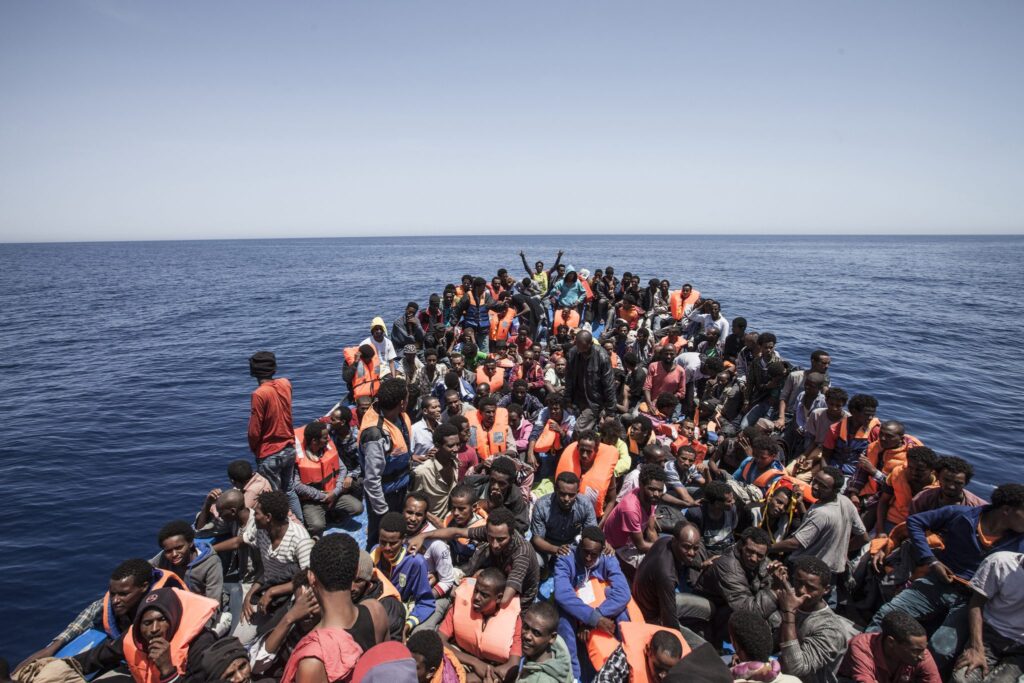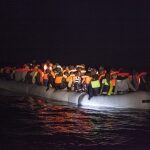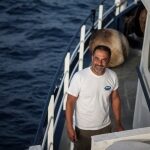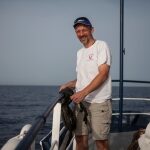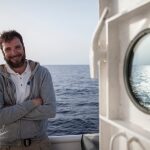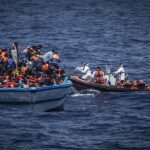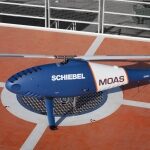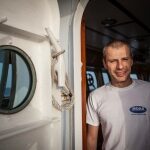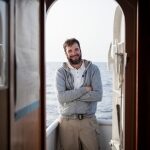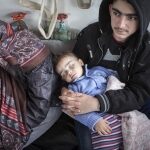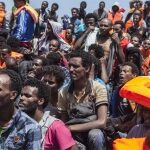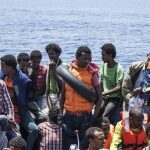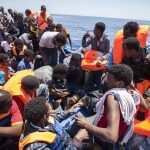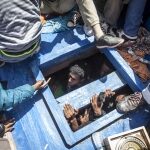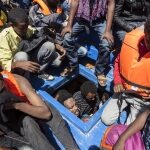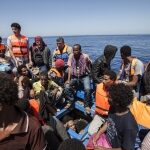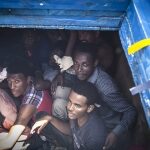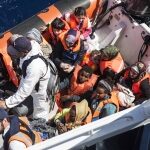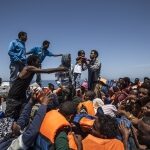“Our search and rescue crew has never seen anything like it. People just kept coming up from the hold in an endless stream of humanity.” MOAS founder Christopher Catrambone
The search and rescue charity Migrant Offshore Aid Station (MOAS) helped rescue 1,441 people in just 12 days in back-to-back sea rescues from unseaworthy boats in the central Mediterranean Sea. After starting its season on May 2, MOAS carried out six separate rescues, providing shelter and life-jackets to 106 children, 211 women and 1,124 men on board the 40-metre (130 ft.) vessel M.Y. Phoenix. Médecins Sans Frontières (Doctors Without Borders) provided post-rescue assistance including medical care.
The vessel was expected to return to its home base in Malta for restocking earlier on Thursday, May 14th, however the crew decided to continue at sea as it detected an aging wooden boat with 561 people on board, including 60 children. Hundreds of people, mostly from Eritrea, were at risk of suffocation crammed down below the deck of the 18-metre (59 ft.) wooden boat.
Speaking about the latest rescue, MOAS founder and crew member Christopher Catrambone said:
“Our search and rescue crew has never seen anything like it. People just kept coming up from the hold in an endless stream of humanity.”
“Some of them have told us terrible stories of persecution and escape. These people have no freedom. They have nothing,” Catrambone said, adding that rescued migrants reported poor conditions and treatment from their time spent in Libya.
As part of the operation, M.Y. Phoenix cooperated fully with Rome’s Maritime Rescue Coordination Centre and other vessels in the area, transferring a number of migrants to merchant vessels and in one case also to the British warship MHS Bulwark. In this case, M.Y. Phoenix transferred 188 people with 15 different nationalities who were rescued earlier from two separate dinghies.
M.Y. Phoenix is currently on its way to Messina (Italy) to disembark 407 people who are currently receiving medical attention.
The MSF team onboard reports that the health status of people is generally good due to being rescued early in their journey. This year, the M.Y. Phoenix is operating close to Libyan coast and flying two Schiebel Camcopter S-100 drones inside Libyan airspace, allowing MOAS to locate and rescue people sooner.
The largest rescue ever carried out by M.Y. Phoenix came just one day after the European Commission presented the European Agenda on Migration with new proposals to address the migration crisis in the Mediterranean.
Solutions include the shared responsibility for asylum seekers across all member states and preventing deaths at sea.
“We are pleased the EU has decided to take immediate actions to save lives,” said MOAS director Brig. Ret’d. Martin Xuereb.
“We are saving around 100 people every day, which is twice the rate we experienced last year when we were at sea for 60 days between August and October. Every additional asset is appreciated in this humanitarian crisis,” he added.
Close to 3,600 migrants were rescued from overcrowded boats sailing from Africa to Europe over the past 48 hours, Italian officials said Thursday. Relatively calm sea conditions typically encourage more crossings.
Mohamed, a 23-year-old from Somalia, shared his harrowing tale:
“On the boat it was very difficult. There is no space and no captain that knows how to drive the boat. People get really scared, especially when the waves are big. We are not even sure of the direction we need to take. The smugglers point in a direction and tell us to keep going that way.”
In 2015 alone, 1,826 migrants are thought to have died while crossing the Mediterranean already so far this year. However, the statistics are unreliable as many of those who made the attempt have vanished, according to new research released by VU University Amsterdam early this week. (http://www.vu.nl/en/news-agenda/news/2015/apr-jun/European-Migrant-Death-Observatory-needed.asp)
“I’m lucky to have been saved. I am born a second time,” said one man from Eritrea.
A 25-year-old man, also from Eritrea, said he had been traveling alone for about seven months. “I passed through Ethiopia and Sudan before getting to Libya where I was caught and put into a camp. I spent one month in the camp. It was there that I met the people that put us on a boat to Italy.”
The surge in migrants crossing the Mediterranean has prompted the EU Security Council to draft a resolution that would grant European countries to use military force to seize suspected smuggling ships on the high seas or in Libya’s territorial waters. The resolution will be discussed during the EU ministers’ talks on Monday, May 18.
MOAS is scheduled to continue its humanitarian work until October and seeks additional funding so the crew may pursue a year-long mission. Donations can be made on www.moas.eu
For more information please contact press officer Christian Peregin on [email protected] or +356 79241187.
- ©MOAS.EU/Jason Florio – all rights reserved
- ©MOAS.EU/Jason Florio – all rights reserved
- ©MOAS.EU/Jason Florio – all rights reserved
- ©MOAS.EU/Jason Florio – all rights reserved
- ©MOAS.EU/Jason Florio – all rights reserved
- ©MOAS.EU/Jason Florio – all rights reserved
- ©MOAS.EU/Jason Florio – all rights reserved
- ©MOAS.EU/Jason Florio – all rights reserved
- ©MOAS.EU/Jason Florio – all rights reserved
- ©MOAS.EU/Jason Florio – all rights reserved
- ©MOAS.EU/Jason Florio – all rights reserved
- ©MOAS.EU/Jason Florio – all rights reserved
- ©MOAS.EU/Jason Florio – all rights reserved
- ©MOAS.EU/Jason Florio – all rights reserved
- ©MOAS.EU/Jason Florio – all rights reserved
- ©MOAS.EU/Jason Florio – all rights reserved
- ©MOAS.EU/Jason Florio – all rights reserved
- ©MOAS.EU/Jason Florio – all rights reserved
- ©MOAS.EU/Jason Florio – all rights reserved
- ©MOAS.EU/Jason Florio – all rights reserved

